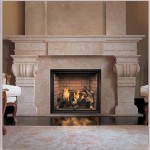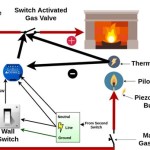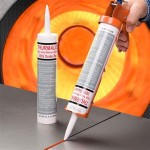How To Mount a TV on a Brick Fireplace Without Drilling
Mounting a television above a fireplace presents a unique set of challenges, particularly when dealing with a brick facade. While drilling offers a secure and traditional approach, it can be undesirable for several reasons. Drilling into brick can be messy and potentially damage the brickwork, and it can be a considerable commitment if one later decides to relocate the television. This article offers a comprehensive guide on how to mount a TV on a brick fireplace without resorting to drilling, exploring alternative methods, essential considerations, and practical steps for achieving a secure and aesthetically pleasing result.
The primary goal when mounting a television without drilling is to find solutions that leverage existing structural elements or create secure attachment points without penetrating the brick. These methods prioritize preserving the integrity of the brickwork while providing a stable platform for the television. The approach chosen will depend on factors such as the weight and size of the television, the type and condition of the brick, and the desired viewing angle.
Understanding the Alternatives to Drilling
Several methods exist for mounting a TV on a brick fireplace without drilling. These alternatives cater to different situations and preferences, each with its own set of advantages and limitations. It is critical to assess each option carefully to determine the most suitable approach for a specific scenario.
Using a Mantel Mount with Clamps: Mantel mounts are designed to attach to the mantelpiece, providing a stable platform for the TV without requiring any drilling into the brick. These mounts typically employ clamps or adjustable arms that grip the mantel, distributing the weight evenly. This method is best suited for fireplaces with a substantial mantel that can support the weight of the TV and the mount. The weight capacity of the mantel must be verified before proceeding, and the clamps must be securely tightened to prevent any slippage or instability. Choosing a mantel mount specifically designed for brick fireplaces will ensure proper grip and prevent damage to the brick.
Employing a Freestanding TV Stand: A freestanding TV stand provides a straightforward, non-invasive solution. These stands come in various styles and sizes, offering the flexibility to position the TV in front of the fireplace without any permanent attachment. This option is particularly suitable for renters or individuals who want a temporary setup or who anticipate relocating the television in the future. While freestanding stands do not involve any modifications to the fireplace, they may occupy floor space and potentially obstruct the fireplace opening. The size and stability of the stand must be carefully considered to ensure it can adequately support the TV and minimize the risk of tipping.
Utilizing Existing Recesses or Shelves: Some fireplaces feature built-in recesses or shelves that can be repurposed to accommodate a television. If the recess is sufficiently large and sturdy, it can provide a natural mounting location without requiring any additional hardware or modifications. This option offers a clean, integrated look, but it may not be suitable for all television sizes or viewing angles. The weight-bearing capacity of the recess must be carefully evaluated, and additional support may be necessary to ensure the TV is securely held in place. Padding or shims can be used to level the TV and prevent any scratches or damage to the recess.
Adhesive Mounting Systems: While less common, adhesive mounting systems are available that claim to securely attach to brick surfaces. These systems typically employ specialized adhesives that create a strong bond with the brick. However, their reliability and weight capacity can vary significantly depending on the type of adhesive, the condition of the brick, and the ambient temperature. Adhesive mounting systems should be approached with caution, and only those specifically designed for brick and rated for the weight of the television should be considered. Thoroughly cleaning the brick surface before applying the adhesive is essential to ensure proper adhesion. It is imperative to follow the manufacturer's instructions precisely and to test the bond strength before fully mounting the television.
Preparing for the Mounting Process
Regardless of the chosen mounting method, thorough preparation is crucial for a successful and safe installation. This preparation involves assessing the fireplace, gathering the necessary tools and materials, and taking precautions to protect the surrounding area.
Assessing the Fireplace: The first step is to carefully examine the fireplace and its surrounding structure. Determine the type of brick (e.g., face brick, common brick), its condition (e.g., cracks, loose mortar), and the presence of any existing features that can be utilized. The mantelpiece, if present, should be inspected for its weight-bearing capacity and structural integrity. Measure the dimensions of the fireplace and the available space to ensure the chosen mounting method is compatible. Consider the location of electrical outlets and cable connections, and plan for any necessary wiring extensions or modifications. A detailed assessment will help identify potential challenges and ensure a smooth installation process.
Gathering Tools and Materials: Assemble all the necessary tools and materials before starting the installation. The specific tools required will depend on the chosen mounting method, but may include a level, measuring tape, stud finder (if attaching to a mantel), screwdriver, wrench, safety glasses, and work gloves. Collect any required mounting hardware, such as clamps, brackets, screws, and washers. Ensure that all hardware is compatible with the TV and the chosen mounting method. Have a helper on hand to assist with lifting and positioning the television. A clean workspace will facilitate the installation and prevent any accidents or damage.
Protecting the Surroundings: Before commencing the installation, protect the surrounding area from dust, debris, and potential damage. Cover the floor with drop cloths or protective sheeting to prevent scratches and stains. Use painter's tape to mask off any delicate surfaces, such as the mantelpiece or nearby walls. Clear any furniture or obstructions from the work area to provide ample space for maneuvering. Proper protection will minimize the cleanup effort and prevent any costly repairs.
Step-by-Step Installation Guide (Mantel Mount Example)
To illustrate the mounting process, this section provides a step-by-step guide for installing a television using a mantel mount with clamps. This method is relatively straightforward and avoids drilling into the brick, making it a popular choice for many homeowners.
Step 1: Assemble the Mantel Mount: Begin by assembling the mantel mount according to the manufacturer's instructions. This typically involves attaching the mounting brackets to the TV and connecting the adjustable arms to the base. Ensure that all screws and bolts are securely tightened to prevent any instability. Refer to the included diagrams and instructions for proper assembly.
Step 2: Position the Mount on the Mantel: Carefully position the assembled mantel mount on the mantelpiece. Ensure that the mount is centered on the mantel and that it is level. Adjust the clamps or arms to grip the mantel securely. Distribute the weight evenly across the mantel to prevent any stress or damage. Double-check the positioning and alignment before proceeding.
Step 3: Secure the Clamps: Once the mount is properly positioned, tighten the clamps or arms to secure it to the mantel. Use a wrench or screwdriver to tighten the fasteners gradually, alternating between clamps to ensure even pressure. Avoid overtightening the clamps, as this can damage the mantel or the mount. Periodically check the tightness of the clamps and readjust them as needed.
Step 4: Connect the TV to the Mount: With the mount securely attached to the mantel, carefully lift the television and attach it to the mounting brackets. Ensure that the brackets are properly aligned and that the TV is securely fastened. Use the appropriate screws and washers to prevent any slippage or movement. Double-check the connections to ensure that the TV is stable and secure.
Step 5: Manage Cables: Once the TV is mounted, manage the cables to create a clean and organized appearance. Use cable ties or adhesive clips to bundle the cables together and route them behind the TV or along the mantel. Avoid running cables across the fireplace opening or in areas where they can be easily damaged. Consider using a cable concealer to hide the cables completely. A tidy cable management system will enhance the aesthetic appeal of the installation and prevent any tripping hazards.
Step 6: Test and Adjust: After completing the installation, test the stability of the TV and the mount. Gently push and pull on the TV to ensure that it is securely attached and that the mount is not moving or wobbling. Adjust the viewing angle of the TV to achieve the desired perspective. Check the functionality of the TV and its connected devices. Make any necessary adjustments to ensure optimal performance. Once satisfied with the installation, remove the protective coverings and clean the work area.

How To Mount A Tv Over Brick Fireplace And Hide The Wires Designing Vibes Interior Design Diy Lifestyle

6 Ways To Mount Your Tv Without Drilling Holes

How To Mount A Tv Without Drilling Holes On Wall Diy

How To Mount A Tv Without Drilling Holes In The Wall Home Cinema Guide

How To Mount A Tv Brick Wall Extreme

How To Mount A Tv Over Fireplace Vertical Chimney Care

5 Ways To Mount A Tv On Brick Wall Without Drilling

How To Mount Tv On Brick Fireplace Wall Step By The Men

How To Mount A Tv On Brick Wall Mountyourbox

Can You Mount Tv On Brick Wall Without Drilling 5 No Drill Tips Clips Hooks
Related Posts








